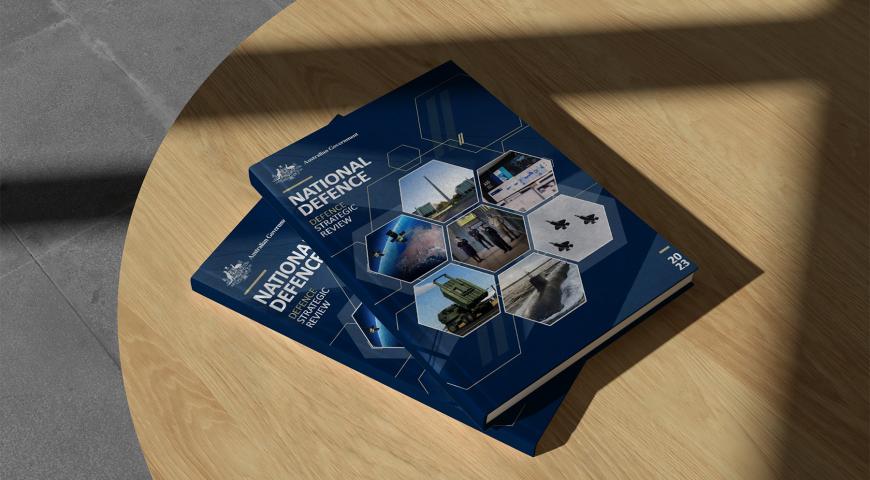In grappling with the future of war and warfare it is useful to have a mental framework to consider the potential impacts of the matters at issue. In considering futures those matters range widely from large scale societal changes through to narrower next generation technological advances that continue the service of legacy fleets.
The framework offered here is probably most useful for the novice. Early in one’s work in future studies it is easy to become fascinated with the import of some particular matter, and suddenly you’re looking at a tree or two, not the forest. This notion of a framework was sparked by Kuhn’s work on paradigms in his Structure of Scientific Revolutions. [1] A lot of future war and warfare work occurs within the existing paradigm, it is roughly analogous to Kuhn’s ‘normal science’. [2] In contrast some future of war work identifies problems with the paradigm. If these problems turn out to materialise, they may just be revolutionary and result in establishing a new paradigm. [3] Consequently I offer a paradigm of the western way of war and warfare. It is a set of rules of thumb, joined together, and is the result of Colin Gray’s approach of trinitarian thinking.[4]
The framework (figure 1) involves a two part diagram of the interdependent activities of war and warfare. These two parts exist under the Clausewitzian axiom that war is a continuation of policy. [5] The two parts are also bridged by the reminder that war is indeterminate, but that people are generally wired to seek causality, and in the case of the undertakings of a State, certitude of causality.
The framework contains a number of trinities (four and three in each part respectively). They need not be limited to this number, but given I am offering something useful for heuristics, going beyond these seven seems to me to have diminishing utility. The part dealing with war includes two trinities that are drawn directly from Gray (in their turns from Clausewitz and Thucydides), [6] one indirectly from Gray’s work, and one that starts with Delbruck. The frame dealing with warfare has a trinity drawn from Clausewitz, another from the thinking of Luttwak, Keegan and McRaven, and the final from Leonhard.
The framework dealing with the contemporary paradigm of war includes four trinities. These trinities include two that link directly to the western canonical approach to the enduring nature, and two that are my attempt at describing the contemporary character of war. They must be considered as building upon the fundament that war is a continuation of policy, and that policy is always subject to change.
The first is Clausewitz’s wondrous trinity as described by Gray in the Strategy Bridge. The second is Thucydides, again described by Gray, again in The Strategy Bridge. [7] This third trinity is an assertion on my part. It describes the targets of war. Those targets are the sources, instruments and objectives of an entity’s power. Each of the elements of this trinity can be explored in more depth if useful. For example, the sources of an entity’s power might be considered as geography, demography and economy. The instruments of power could be modelled on any number of existing approaches, DIME springs to mind as the most accessible example. The fourth trinity in establishing the framework for war deals with dominant approaches to affecting those targets. They are attrition, exhaustion and annihilation. [8] This fourth trinity is on the least solid ground, in part because Delbruck deliberately established a pair of ideas, not a trinity, and also because elements of the trinity are directly applicable in warfare as much as they are applicable in war.
Switching then to describe the frame dealing with warfare. Its first trinity is taken from Clausewitz. It hinges on the enduring idea that warfare is conducted in an environment that subjects participants to danger, uncertainty and friction. [9] The second is my attempt to describe the contemporary post heroic approach to warfare. This trinity draws on many sources, and on my personal experience. [10] It cannot be considered exhaustive, but instead ‘roughs out’ a reasonably coherent set of ways of warfare currently in use. It includes networked lethality, predictive intelligence, and relative superiority.
Networked lethality is my attempt at describing the number of current approaches that combine the mature ideas of network centric warfare with maturing ideas of distributed lethality. Relative superiority is taken from the Howard and Paret translation of Clausewitz and was developed into an idea central to special operations by McRaven. [11] Almost all contemporary military officers will recognise the enormous practical sophistication of this notion that has occurred over the past two decades. Predictive intelligence is my attempt at describing the practice established by analytical planning that includes speculation about system causality that lies at the heart of the critical factors approach to evaluating centre of gravity. [12] Predictive intelligence also contains within it the fundamentals of decision superiorly the notions of ‘better’ decisions made and disseminated faster than an adversary. As warfare goes on within a theatre sophisticated causal system-maps are developed that are then used as the basis of targeting. This last element, targeting, breaks the notion of a trinity, but as a fudge in the interest of consistency, I place targeting at the centre of this depiction.[13]
The last trinity outlines approaches to defeating adversaries. It is taken from Leonhard’s The Art of Maneuver and has been present in our doctrine (noting that I include Leonhard’s pre-emption, rather than lumping it into dislocation) for the last two decades. [14] This set is indicative not exhaustive, and if needed one can develop a sense of additional effects from a close reading of ADDP 3.[15]
The framework ends up looking something like figure 1. A trinitarian view of the contemporary paradigm of war and warfare.
The utility of a paradigm framework like this is that it allows you to quickly deduce where the important impacts of your work fall. Or where the premises of your argument are likely to meet with long standing fundamentals that will take some effort to overcome.
Take for example the developing consideration of whether or not technological convergence will change the nature of war. This framework allows you to quickly establish some necessary proofs that will need to be met. First, is technological convergence likely to change the fundament that war is a continuation of policy? Second, is technological convergence likely to change the interdependent relationship of the elements of the wondrous trinity? Third, is technological convergence likely to change the interdependent motives for the collective behaviour of security communities (fear, honour, interest)? If none of these proofs can be met then we are probably not looking at the break down of the existing paradigm.
As another example, while conducting futures work you might be called upon to consider the implications for war and warfare of some particular kind of emerging technology. A framework such as this supports you in elevating your consideration from specific means to conceptual thinking about ways. For example, will the particular emerging technology offer some new defeat mechanism? Will it render post-heroic approaches to warfare irrelevant, or indeed improve the performance within that model significantly?
Finally, the aim of such a simplistic framing of contemporary paradigm is to help you establish important questions that could form the basis of a close examination. It should be the genesis of exploration, not the start-point for establishing the limits of consideration.
[1] Kuhn, T.S. The Structure of Scientific Revolutions, Fourth Edition. University of Chicago Press, 2012. At the start of Chapter Two: The Route to Normal Science, Kuhn defines a paradigm along the line of established usage as “an accepted model or pattern”.
[2] Kuhn, Chapter Two (above) and Chapter Three: The Nature of Normal Science deal with the ideas of the routine work within a paradigm in great depth. He makes use of numerous case studies to illustrate the idea.
[3] Kuhn, Chapter Eight: The Response to Crisis deals with anomalies in normal science that accumulate to the point of a crisis that leads to the development of counter theory.
[4] Gray, C. The Strategy Bridge: Theory for Practice. Oxford University Press, 2010. In Appendix D, Potent Trinities: Fourteen Skeleton Keys of Theory for Strategists, pp278-283. Gray, C. Schools for Strategy: Teaching Strategy for 21st Century Conflict. US Army War College, 2009. Gray introduces the idea in this study in pp4-6 under the heading ‘The Nature and Character of Strategy: Fundamentals’.
[5] Clausewitz, Book One, Chapter One, Article 24 (p87). Book Eight, Chapter Six, Parts A and B (pp601-610).
[6] Gray, 2010, p280. Gray, 2009, p5.
[7]Gray, 2010, p280.
[8] Delbruck, H. History of the Art of War within the framework of Political History, Greenwood Press, 1985. Volume IV pp293-294. Simpkin, R. Race to the Swift: Thoughts on 21st Century Warfare, Brasseys 1985. pp8-13 and pp19-23. Clausewitz, On War, Princeton University Press, 1984. Translated by Howard and Paret. Book eight Chapters six, seven and eight. Delbruck establishes dual approaches from his study: Strategy of Annihilation and Strategy of Exhaustion (exhaustion has sometimes been translated as attrition - hence the start-point for this trinity). Book Eight of On War opens the way for a trinity in its Chapters Seven (The Limited Aim: Offensive War), Eight (The Limited Aim: Defensive War) and Nine (The Plan of a War Designed to Lead to the Total Defeat of the Enemy). In short in this trinity, annihilation relates to the complete subjugation of the enemy allowing for the occupation of its territory, and the requirement to succumb to the victor’s aims of policy. Attrition results in a preference to accept the conditions of the opponent rather than continue to accept the accumulating cost to the demography and economy of the ongoing war effort. Exhaustion results in the pursuit of a war of limited aims by a much weaker opponent against a much stronger opponent. The approach plays upon an opponent’s will to fight. It also relies upon the passage of time playing upon the sustained will to fight of an expeditionary power (or State with offensive purposes). As an illustration, WWI was won through attrition, WWII was won through annihilation, and the Vietnam War was won through exhaustion, as was the Mujahedeen victory against Russia in Afghanistan.
[9] Clausewitz, Book One, Chapters Four, Six, and Seven.
[10]Luttwak, E. “‘Post-Heroic Warfare and Its Implications,” in Jun’ichiro Shoji, Kiyoshi Aizawa, Tomoyuki Ishizu, Kyoichi Tachikawa, Hiroyuki Shindo, and Sugio Takahashi (eds), Proceedings of NIDS International Symposium on Security Affairs– War and Peace in the 21st Century: Reflections upon the Century of War (Tokyo: National Institute for Defense Studies 1999). Keegan, J. The Mask of Command, Jonathon Cape, 1987. Following a close examination of four case studies Keegan sets out the notion of Post Heroic Command in the Nuclear Age pp311-352. While Keegan develops a thesis related to nuclear war, elements of the argument apply to contemporary ‘information-dependent’ operations. For example “To reduce a large volume of complex information quickly to a simple ‘read out’ can be done; but only by interposing a dense filter of machines and intermediary personnel between the decision-maker and reality.” Alas “The result may be to persuade the strategist that he enjoys the tactician’s direct vision and freedom of action; but the sensation will be an illusion.” pp348-349.
[11] Clausewitz, Book Three, Chapter Eight, pp194-197. McRaven, W.H. SPEC OPS - Case studies in special operations warfare: Theory and Practice, Presidio Books, 1995. In Chapter One McRaven asserts that “Relative Superiority is crucial to the theory of special operation.” He goes on to examine the importance of the concept in contemporary operations. This section overlaps into his ‘Six Principles of Special Operations”. pp 4-23.
[12] Commonwealth of Australia, ADDP 5.0 - Planning series: Joint Planning, Third edition, 2018. Chapter two - Foundations of joint planning includes the definition of Centre of Gravity and includes a lengthy description of the idea. Commonwealth of Australia, ADDP 5.0.1 - Planning Series: Joint Military Appreciation Process, Second edition, amendment list 2, 2016. Chapter three: Step two - Mission Analysis contains more than ten pages of description of the idea of COG and critical factors (pp3-6 to 3-11). Vego, Milan N. Operational Warfare, US Naval War College publication, 2000. Vego also covers COG and critical factors comprehensively pp 307-319.
[13] Commonwealth of Australia, ADDP 3.14 - Targeting, 2009. The First chapter section titled Fundamentals of targeting gives a sense of how Targeting can be seen as a unifying central approach to ADF operations. An argument could be built around the use of this approach in coalition, joint, multi-agency task forces. In other forums I have been quite critical of this post-heroic approach, especially of its primacy as the contemporary way of war practiced in the ADF. I do not say that it is not useful. I simply say that it is incomplete, as there needs to be room for ‘fighting for information’ as well as fighting to suppress enemy networks for long enough to force their response and detection.
[14] Leonhard, R. The Art of Maneuver: Maneuver-Warfare Theory and AirLand Battle, Presidio, 1991. Chapter Three: The Means of Defeat, defines the terms and provides useful examples, pp61-77. Commonwealth of Australia, ADDP 3.0 Operations Series: Campaigns and Operations, second edition. 2014. Chapter Three, Tenets of Manoeuvre section pp 3-29 - 3-30.
[15] ADDP 3.0. The idea of ‘effects’ is used widely within ADDP 3.0. The types of effects used within the ADDP are defined at Annex A to Chapter 5.
Defence Mastery
Technical Mastery
Please let us know if you have discovered an issue with the content on this page.
Comments
Start the conversation by sharing your thoughts! Please login to comment. If you don't yet have an account registration is quick and easy.




